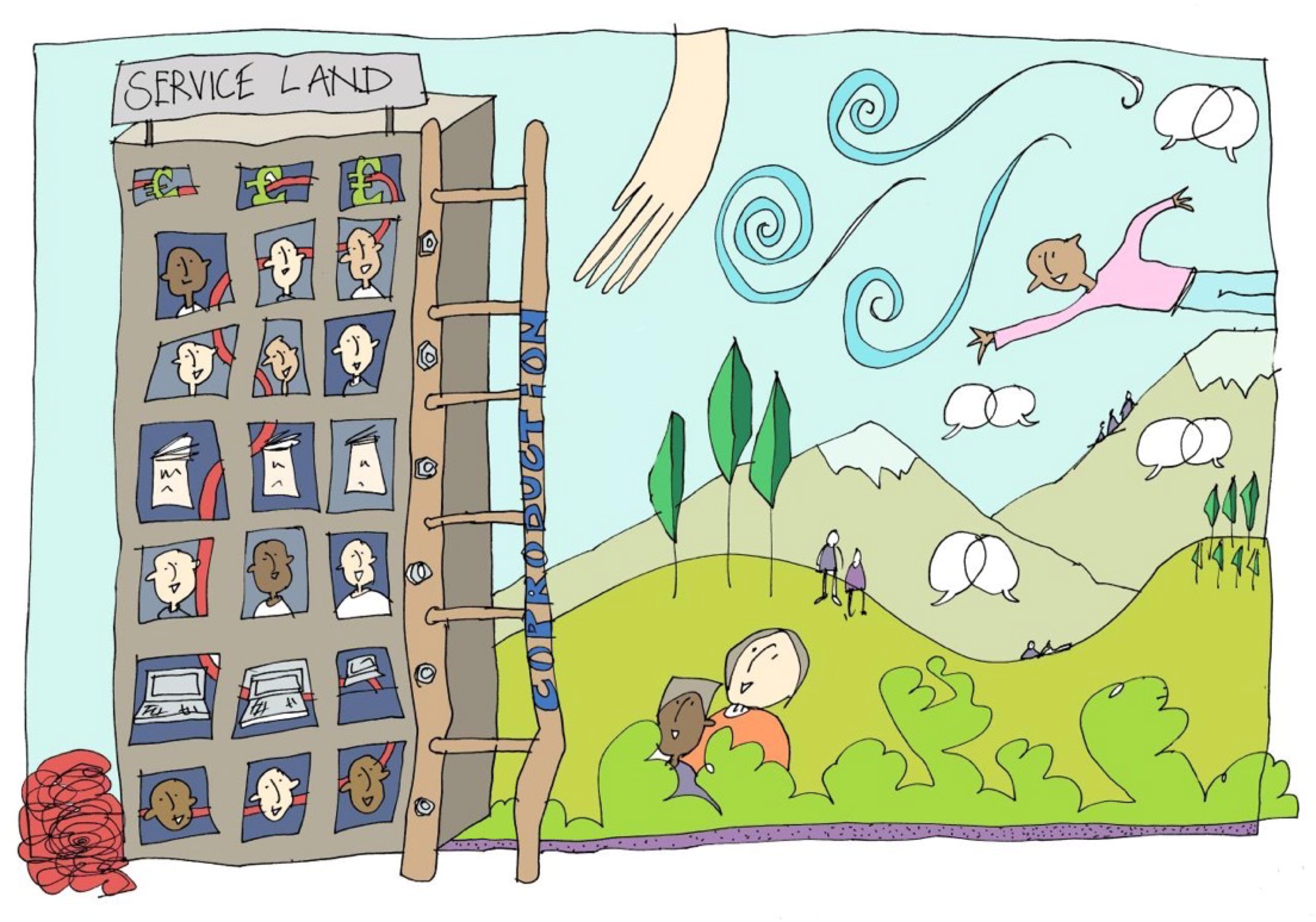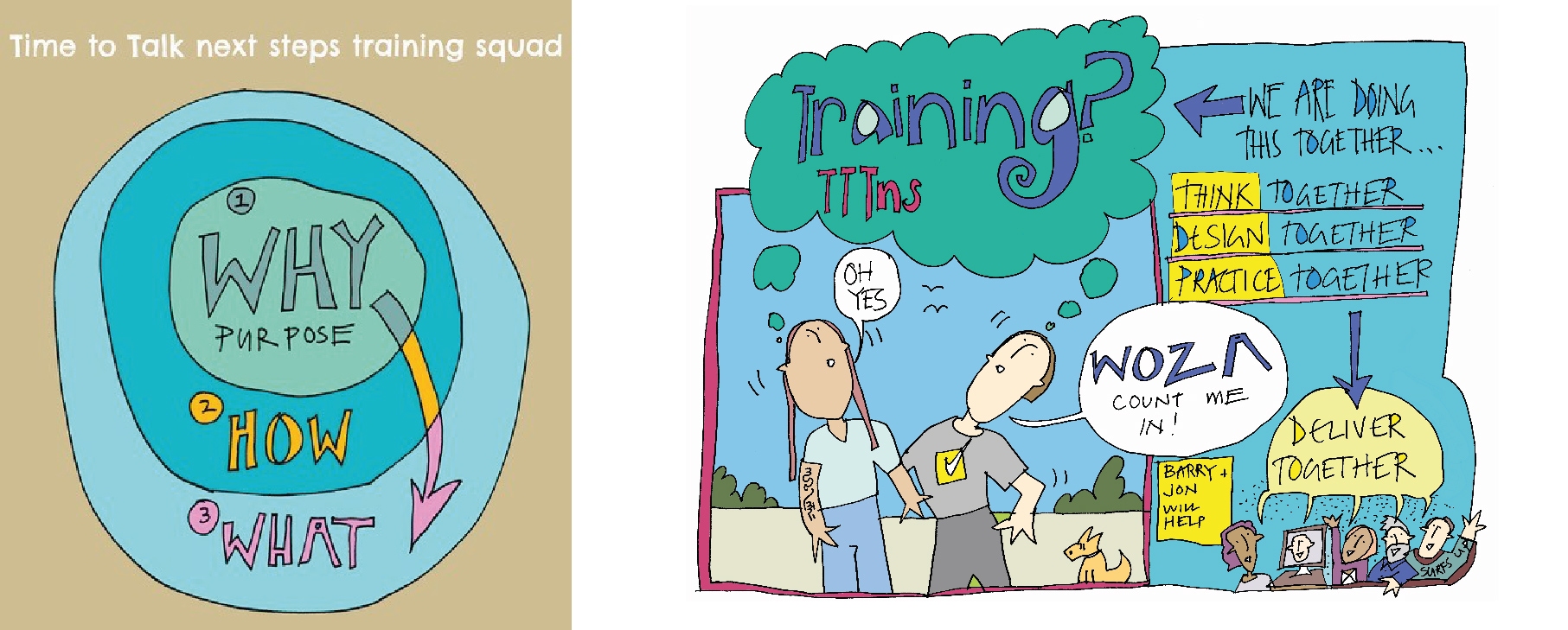Blog: Why I never use the word 'coproduction' with young people
Associate, Jon Ralphs works as a supporter on our Time to Talk Next Steps (TtTNS) programme. Young people are involved in all aspects of project delivery. In this blog Jon talks about their work as a group to develop the Training Squad, an exciting new project to deliver training for practitioners.

Although work with the TtTNS Training Squad has been 'coproduced', I don’t think I have ever used the work coproduction with young people and these are the reasons why:
- Coproduction starts from a service perspective.
- It paradoxically talks about equal power.
- The word coproduction does not connect with young people.
- Its linear framework limits thinking and ways of working together.
Coproduction starts from a service perspective
Coproduction comes from a service point of view and is a way of working to involve people who are served by services. It wants to work with the people they serve. Our starting place was asking the young people, “Why do you want to train professionals?” We wanted to hear their ideas emerging from their own perspectives.
It paradoxically talks about equal power
Coproduction often talks about equal power. But, to move towards this posture, services would have to reduce their power or use its power to build up another power. If I’m giving somebody power or reducing my own power, taking away it just feels paradoxical. With the Training Squad we started from the place of everybody being fully powerful.
The word coproduction does not connect with young people
I like the words collaboration and contribution. This allows young people to flourish and to bring their true selves for a part or the entirety of the process. Collaboration makes more sense to young people we often hear about artists and musicians like Ed Sheeran collaborating with artists from other genres to make something new and exciting.
Its linear framework limits thinking and ways of working together
Coproduction is often written in the linear way to help services understand how they are doing or not doing. For example, creating a linear ladder or a charter of coproduction. I think coproduction is more of a spectrum, a multi layered approach that changes as the process changes. It ebbs and flows through a process.

When I reflected on how we worked with young people, there are principles of coproduction that made sense:
- Recognising people as assets.
- Building on people's capabilities.
- Encouraging peer support.
- Blurring boundaries.
- Facilitating rather than delivering.
Recognising people as assets
Every young person contributing to the design and delivery of the training is valued and has value. It may be a one off contribution or sticking with the process from start to finish. Our job here is to see, acknowledge and appreciate young people’s assets. I like to frame it as appreciations, to appreciate means to grow in value.
Building on people's capabilities
We talk in our Training Squad about young people having super-strengths. My role is to ensure. It’s ensuring that as a supporter I can see how these can be used in the design and delivery of the training. One service perspective might label a young person as being diagnosed with ADHD, but I see the neurodiversity as more than a service label. It can be a young person’s super-strength because they offer a different and creative way of thinking. Another service label might be ‘Autistic’, but I see that super-strength as a young person offering a structured, processed way of thinking. Often needing the full information to make sense of where we are going. So, we create a space where young people can bring their super-strengths; this may be a digital drawing on Procreate, a 90 second ambient sound bite or to question the content of the session.
Encouraging peer support
Within the training we encourage and create an environment in which people in the group support each other. They come up with the ideas, we respond and build them into project delivery. TtTNS has a peer support group and many of these young people meet and talk about things that matter to them We share together what matters to us and remember this when we meet again.
Blurring boundaries
I think also there is a need to blur the boundaries. I’m not a professional coming in to fix it or steer the group to what I think would help young people design the training. The young people are not just ‘experts by experience'. We all bring our expertise from experiences in our own lives. We are happy when young people become facilitators.
Facilitating rather than delivering
We recognise the importance of bringing a coaching or facilitating role to the process. The importance of holding a safe space that allows young people to explore, discuss and design training. A short while ago I produced a vlog with fellow supporter Barry Jones that talks further about this approach.
So, is it the word coproduction I find difficult or the way that services have used it? The bottom line for me is coproduction is a verb, a doing word. A friend said to me, “If I know but do not do, I do not know.”
I’ll leave you with that quote.

-
Background to the coproduced training
News Sign-up
Contact Details
Jon Ralphs
